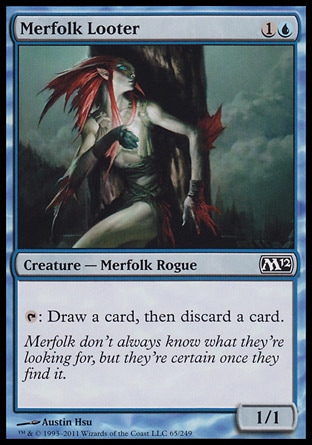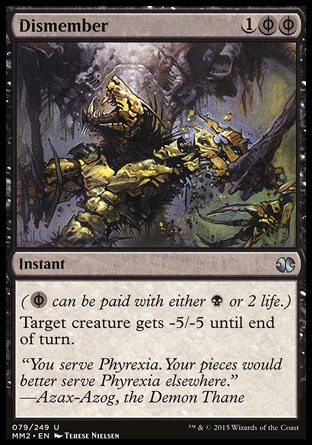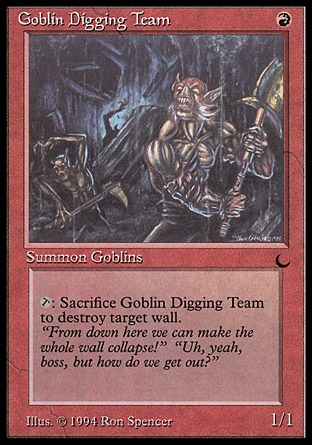Welcome back, my fellow Vorthoses! If you are new to the scene, welcome alone will do.
Last time, I discussed some of the techniques involved in writing for the double-faced Werewolves of Innistrad. In that article, I compared the names and flavor text gracing the face (or faces) of every card to bookends on a shelf. I have received some requests from some of you to dive deeper into this analogy, and so that is exactly what I will be doing with this article.
If you are interested in both names and flavor text—and in the important roles each plays in establishing the flavor of a card—this article is for you.
Bookends
v
Bookends come in a variety of shapes and sizes. Some are artistic, while others may be more practical in their design. But at the end of the day, one requirement must be met in order to label those objects as bookends: They have to be able to hold up your books.
Each Magic: The Gathering card tells a story, and each is like the single page of a book. Like that page, you will read a card top to bottom, left to right. What this means is that the very first thing you will read when encountering a new card is the name. Following that logic, the very last thing you will read is going to be that card’s flavor text. In between that name and those lines of flavor lay the art, type line, and mechanics of the card. Much like bookends on a shelf, the name and flavor work to support what comes in between them, ensuring a cohesive card from beginning to end.

Card Name — The Foundation
A card's name functions as its anchor; it is the rock put up on a shelf before the books it will eventually hold. It is what everything else leans against, and without it, you are left with a mess of unorganized information.
When you read a card’s name, it immediately informs you of what to expect from the rest of the card. Let’s look at an example:
The name Merfolk Looter immediately sets up two very important expectations. First, we will expect to see a merfolk in the art, we’ll expect the card to be a creature, and we’ll expect the creature's type to be Merfolk. Looking at the art and type line of this card confirms our first expectation to be fulfilled. Second, the word looter will cause us to expect the merfolk depicted to be looting something, and we will expect the card’s mechanics to represent looting in some way. Again, the art does not fail us, and the mechanic is Magic’s famous “Looter” mechanic. This card is a perfect example of how a single two-word name can inform the player what to expect from the art, card type line, and mechanics. The name Merfolk Looter serves as an anchor, a foundation of expectation that the rest of the card builds upon.
As another example, let's look at the card Dismember. The card's name is a single word that does not represent a permanent object, but instead a single destructive action. We expect to see a creature being dismembered, we expect the card to be a nonpermanent (instant or sorcery), and we expect the mechanics to represent harming a creature in some way. Again, the card meets all of our expectations, allowing the name to serve as a perfect foundation for the entire card.
When a card's name is able to so perfectly represent its overall flavor, the flavor text is offered the freedom to do one of two things. The flavor text can offering further insight into the card—as it does on Merfolk Looter—or it can use the opportunity to build the world that card’s flavor is based in—as it does on Dismember. Both of these options are available because the name is doing such a great job that the flavor text is not needed to make sense of the cards mechanics, art, or overall flavor.
Flavor Text — The Closer
Sometimes, a card’s mechanics aren't so straightforward, and the card’s name is only able to do so much. In those cases, flavor text takes on a much different role. Take the card Goblin Digging Team for example.
The name Goblin Digging Team creates the expectations that the card’s art will depict a team of goblins that are digging and that the card type will be a Goblin creature. It makes us think the mechanic should involve digging in some way, but as there is not a direct analogue to digging in a trading card game, this expectation is vaguer than the first two. The Ron Spencer art and type line do not disappoint, and so we find ourselves reading the card’s mechanic. You can tap and sacrifice the Goblin Team to destroy a Wall, and while the name Goblin Digging Team helps to set up the flavor of this card, it’s the flavor text that really ties everything together and puts a bow on the whole package.
That simple line cements this card's flavor in our skulls and helps us reconcile the mechanics with the card's name and flavor by teaching us why the Goblins are sacrificed as part of the mechanic. It is because of that line we are able to establish the desired narrative in our mind's eye and can picture a team of goblins who work hard to dig their way beneath a wall in order to destroy it by making it collapse on their own heads, sacrificing themselves for the greater good.
Other times, the name is unable to support the weight of art, type line, and mechanics, and in those situations, it is up to serve as that other bookend and keep the flavor of a given card in check. Quicksilver Amulet is a great example on which the flavor text is serving this important function. The name causes the player to expect art that depicts an amulet made of quicksilver and expects the card’s type to be an artifact. The name does nothing to add flavor that explains the card’s mechanic, and so the flavor text fills that gap in finalizing the card.
That line paints the picture of a magical artifact that is able to seal onlookers away within it. That simple idea reinforces the mechanic and allows your mind to jump to the idea that, as the artifact’s controller, you are abusing that inherent magic to summon those who were unfortunate enough to gaze upon the amulet too closely.
In Closing
Names and flavor text play incredibly important roles in managing the expectations of the reader of a given Magic: The Gathering card. When properly used, a good card name can help a player better digest a card’s mechanics by setting up the flavor those mechanics represent. When a card is too strange or the perfect name is unavailable, it falls on the flavor text to pick up the remaining pieces, tying the card’s art and mechanics back into the overall flavor set up by that card's name This both ensures the card is easier to understand and helps establish the card as part of a living and breathing fantasy universe. When used properly, a Magic card’s name and flavor text will erode the mechanical lens of the game, transforming the card into a window to another plane.
I hope you enjoyed this look into the role of names and flavor text in establishing the flavor of a given Magic card. Ensuring I adequately represent a card’s mechanical flavor is just one of the many puzzles I have to solve as a names and flavor text writer for Magic, and it is one of my favorite aspects of the work.































